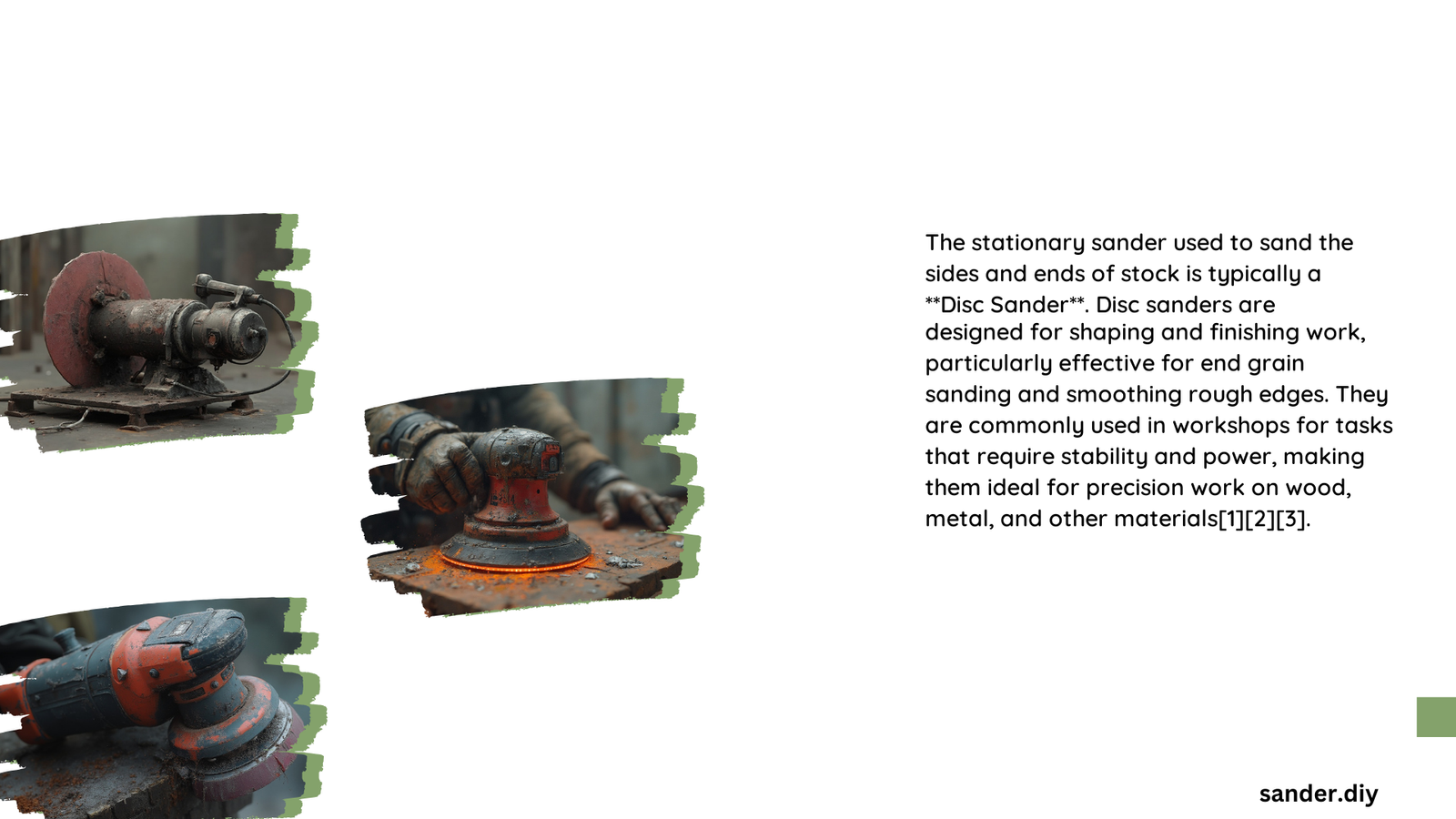Edge sanders are the primary stationary sanders used to sand the sides and ends of stock. These specialized machines feature a vertical sanding belt that efficiently smooths edges and end grain. Edge sanders come in various sizes and configurations, with belt widths typically ranging from 4 to 9 inches and lengths from 60 to 120 inches. They offer precision, power, and versatility for woodworking tasks that require smooth, square edges on boards, panels, and other stock materials.
What Are the Key Features of Edge Sanders?
Edge sanders are designed specifically for sanding the sides and ends of stock, offering several key features:
- Vertical sanding belt
- Adjustable work tables
- Powerful motors (typically 1.5 to 3 HP)
- Dust collection systems
- Oscillating belt motion (in some models)
- Tiltable platens for beveled edges
These features combine to provide efficient and precise edge sanding capabilities for various woodworking projects.
Which Are the Top Edge Sanders for Woodworking?

Cantek CT108 Edge Sander
The Cantek CT108 is a robust edge sander suitable for professional woodworking shops:
- Motor Power: 1.5 HP (1-phase) or 2 HP (3-phase)
- Belt Size: 6\” x 108\”
- Table Dimensions:
- Front table: 37\” x 7 ¾\”
- Side table: 19\” x 12\”
- Platen size: 6 7/8\” x 39\”
Key Features:
– Adjustable tables for full belt utilization
– Rugged heavy gauge steel base
– Quick belt tension and tracking adjustment
– Sanding belt safety guard
– CSA / UL approved magnetic starter
Laguna 6|89T Edge Sander
The Laguna 6|89T offers versatility with its swing function:
- Motor Power: 1.5 HP, 110 V, 18 amp
- Belt Size: 6\” x 89\”
- Table Dimensions:
- Front table: 10\” x 30\”
- End table: 10\” x 12\”
- Platen size: 7\” x 33\” (Graphite)
Key Features:
– Horizontal/vertical sanding with swing function
– Platen tilt: 0° – 90°
– Belt speed: up to 3,900 RPM
– Oscillation: ½\”
Shop Fox W1845 – 6\” x 108\” Oscillating Edge Sander
The Shop Fox W1845 is a powerful option with oscillating function:
- Motor Power: 3 HP, 240V, single-phase, 11A
- Belt Size: 6\” x 108\”
- Table Dimensions:
- Main table: 35-1/2\” x 12\”
- Aux. table: 10\” x 11-1/2\”
- Platen size: 6-3/4\” x 39-3/4\”
Key Features:
– Oscillating sanding surfaces with 1/4\” oscillation stroke
– Precision-ground cast-iron adjustable tables
– Platen tilt: 0-90 deg. (5 deg. scale)
– Quick-release belt tension lever
– Graphite-coated platen
How to Choose the Right Edge Sander?
When selecting an edge sander for your woodworking needs, consider the following factors:
- Motor Power: Choose based on your workload and material types.
- Belt Size: Larger belts offer more sanding area but may be overkill for small shops.
- Table Dimensions: Ensure they’re suitable for your typical stock sizes.
- Features: Consider oscillation, tilt capabilities, and dust collection efficiency.
- Workshop Space: Check the machine’s dimensions and weight for proper placement.
- Budget: Edge sanders range from $1,500 to $4,500+, so balance features with cost.
What Are Effective Sanding Techniques for Edge Sanders?
To achieve the best results with your edge sander, follow these techniques:
- Optimal Feed Rates: Maintain a steady feed rate of 10-20 inches per minute.
- Grit Progression: Start with coarse grits (80-100) and progress to finer grits (up to 320-400).
- Even Pressure: Apply consistent, moderate pressure to avoid uneven sanding.
- Use the Entire Belt: Utilize the full width of the sanding belt to extend its life.
- Regular Belt Inspection: Check for wear and replace belts as needed.
What Are Common Challenges in Edge Sanding?
Edge sanding can present several challenges:
- Belt Slippage: Ensure proper tension to prevent slipping.
- Uneven Sanding: Use adjustable tables and maintain consistent pressure.
- Dust Management: Employ effective dust collection for visibility and safety.
- Heat Build-Up: Monitor the machine during prolonged use to prevent damage.
- End Grain Sanding: Use lighter pressure and finer grits for end grain.
By understanding these challenges and implementing proper techniques, you can achieve superior results in edge sanding.
